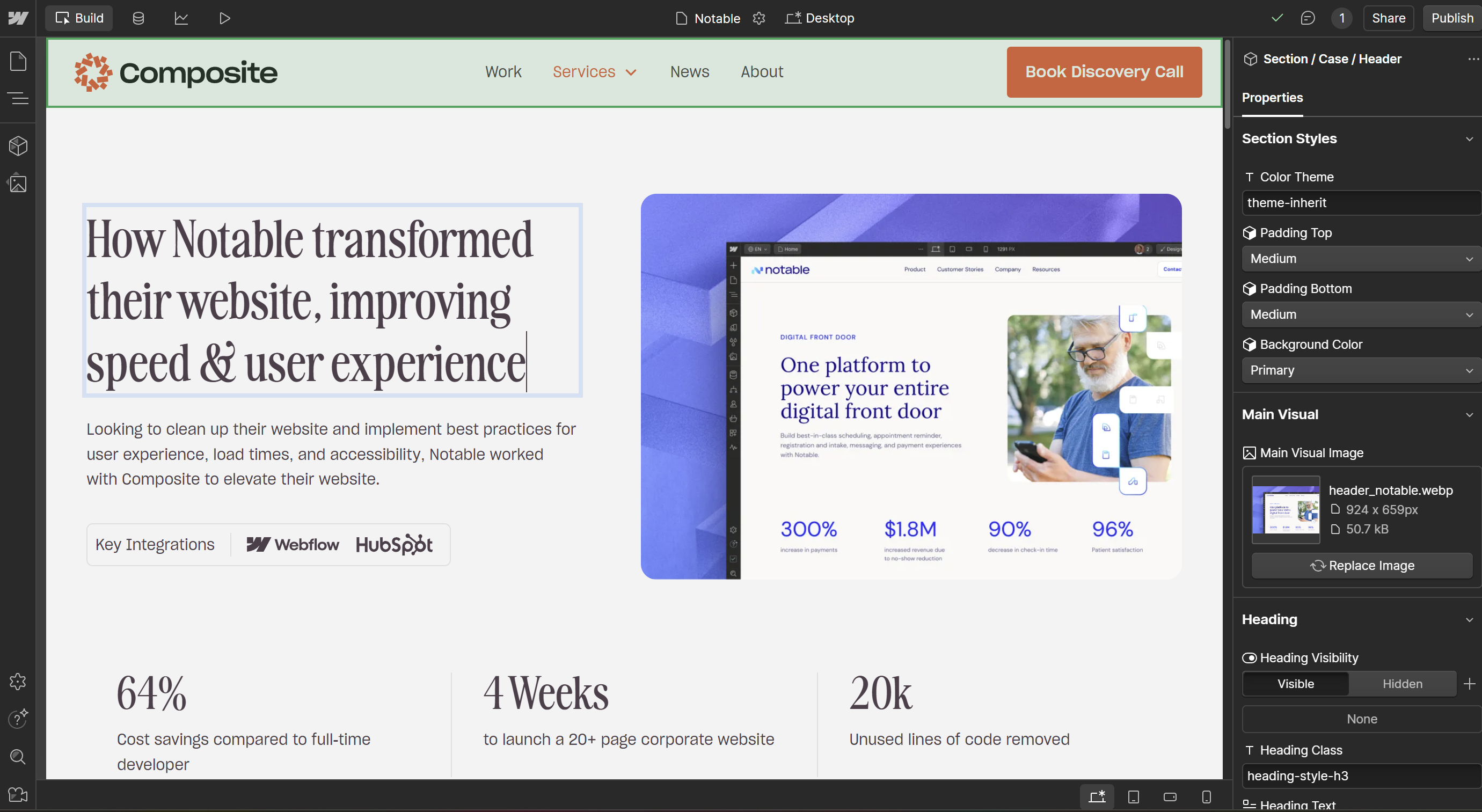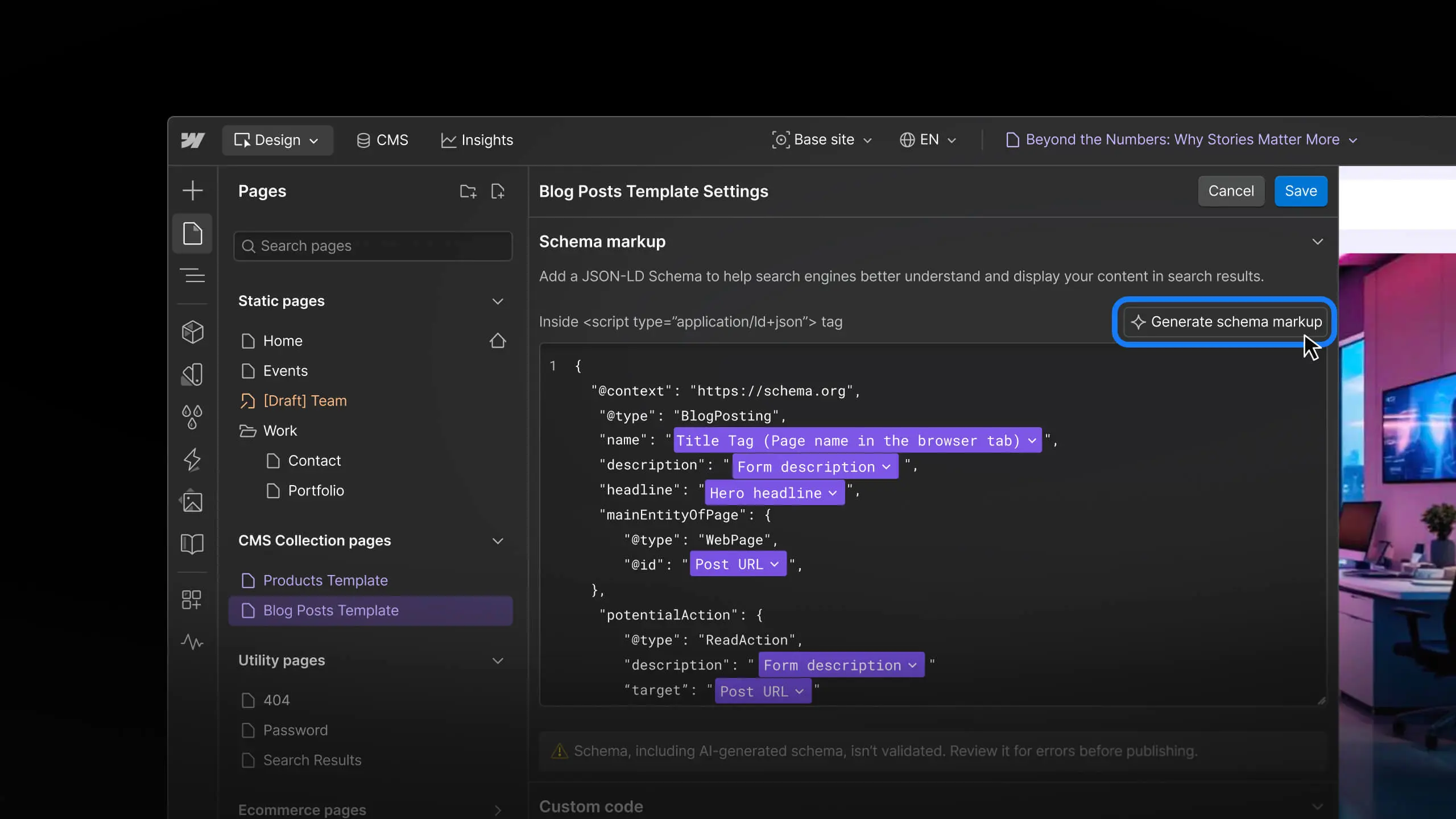Modern websites are never really finished. They evolve, expanding with new products, campaigns, and teams. But as digital ecosystems grow, so do the cracks. Layouts drift off-brand. Pages become one-offs. Components multiply until every update feels like re-inventing the wheel.
As a UX design agency that builds for long-term scalability, Composite knows that’s where scalable UX systems come in.
Design systems have moved from a “nice to have” to a strategic necessity for brands that want consistency and velocity at the same time. The goal isn’t to build faster for the sake of it. It's to build smarter, creating websites that adapt gracefully to growth instead of breaking under it.
The New Demands of Scalable UX
The pace of digital change has outgrown static design. Marketing teams launch new campaigns weekly, product lines expand quarterly, and content is updated daily.
Scalable UX starts with systems thinking, designing not just pages, but relationships between patterns, components, and rules. When every element knows its place and purpose, your team can make changes confidently without derailing brand integrity.
A scalable UX framework isn’t about rigidity, but about resilience. It gives your brand room to evolve while maintaining clarity and cohesion across every touchpoint.

Design Systems: From Consistency to Velocity
Early design systems were built to keep things consistent. Now, they’re built to make teams move faster.
By aligning design, content, and development around a shared visual language, teams can experiment without chaos. A well-defined system reduces dependencies. Designers don’t have to guess margins, content editors don’t have to worry about layout shifts, and developers can focus on performance instead of patching inconsistencies.
And while consistency used to mean “everything looks the same,” today it means “everything feels intentional.” Systems give teams freedom within boundaries by acting as a defined set of reusable, flexible parts that can be reconfigured in endless ways.
At Composite, we often describe this as creative elasticity: the ability to stretch a brand without snapping it.
When Growth Breaks Design
As companies grow, design debt often grows faster. A single homepage refresh can lead to mismatched styles across dozens of subpages. A campaign landing page built in a hurry becomes a visual orphan. The original design logic fades as more contributors touch the system.
That’s how redesigns happen—not because a brand’s vision changed, but because the framework couldn’t scale with it.
Scalable UX systems prevent that spiral by replacing intuition with intention. Instead of scattered templates, every component is connected to a rule: typography, spacing, animation, or hierarchy. Each page becomes part of a networked system, not a one-off artifact.
Building for Flexibility, Not Fragility
The most effective systems aren’t rigid grids of rules; they’re flexible frameworks built to adapt.
Flexibility comes from modularity. When a website is built around reusable patterns, like cards, blocks, sections, collections, those pieces can be rearranged and restyled without rewriting code or redesigning from scratch. This approach future-proofs both design and content.
It’s also what enables responsive thinking beyond screen sizes. The same modular logic that supports different viewports also supports different contexts: a product launch, a new feature page, or a multi-language rollout. The system scales because it was designed to bend, not break.
Design tokens, documentation, and clear ownership reinforce this elasticity, creating a living, evolving structure that welcomes change instead of resisting it.
Why Webflow Works for System-Driven Design
A design system is only as strong as the platform it lives on.
That’s why Webflow has become the preferred environment for system-driven design teams, and why partnering with a Webflow agency in NYC like Composite can transform static design into scalable systems. Its visual development model mirrors how designers already think—in components, hierarchy, and relationships. Instead of handing off static mockups, teams can create live, interactive systems that evolve in real time.
Global styles ensure consistency across typography, color, and spacing. Reusable components allow complex layouts to scale without duplication. And CMS collections turn static sections into dynamic, connected systems, letting designers and marketers manage growth together without waiting on developers.
For Composite, Webflow bridges the gap between strategy and execution. It allows us to build custom systems that clients can actually maintain themselves, not just admire.
Design Systems as the Bridge to AI and Automation
Scalable UX isn’t just about efficiency. It’s also the foundation for what comes next.
As AI-driven personalization and automation expand, websites will need to adapt dynamically by tailoring content, layout, and tone to each visitor or agent. That adaptability depends on structure.
A modular, well-labeled design system makes your site understandable not just to people, but to machines. The same clarity that helps your team scale helps AI tools interpret your content, connect meaning, and surface relevant information. SEO expands into AEO, or Answer Engine Optimization.
In other words, scalable UX isn’t just preparing you for tomorrow’s marketing operations, it’s preparing you for AI-readable design.

The Composite Perspective
At Composite, a NY-based dedicated Webflow UX agency, we approach scalability as both a creative and operational challenge. Our systems are built to empower teams, not restrict them, by giving designers space to experiment, marketers confidence to update, and developers a clean, maintainable foundation.
Whether we’re building for fintech, medtech, or emerging AI brands, the goal is the same for any digital strategy agency: clarity that scales.
A well-structured design system isn’t just efficient, it’s a long-term investment in brand stability, performance, and adaptability. The brands that design for scale today will be the ones ready for whatever comes next.
Because design systems don’t just keep websites consistent. They keep them alive.




.svg)

.svg)











